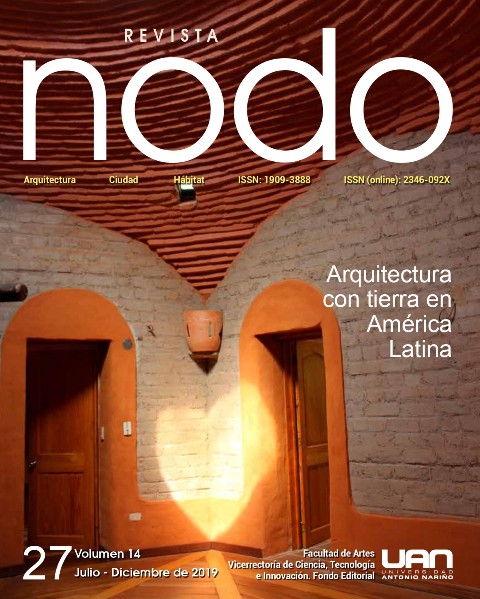The stabilized rammed earth building technique and its use in Australia
DOI:
https://doi.org/10.54104/nodo.v14n27.166Keywords:
earth building, stabilized rammed earth, contemporary Australian architecture, development of building techniquesAbstract
The building technique known as rammed earth has been used in Australian civil construction for decades. This practice, used in various regions of Australia, has brought with it important technical improvements to the execution of Stabilized Rammed Earth (SRE) buildings. This study highlights some of those advances in terms of construction details, composition, special cares during execution, the use of formwork, and construction pathologies, however, these can be considered and incorporated into the traditional (unstabilized) rammed earth technique. This article aims to inform and update professionals and students about the evolving technology of using earth as the main building material, providing relevant information about its contemporary production. It aims to share design and building insights that may enrich the knowledge around the limits and needs of the SRE, and to contribute to the research of its productive chain, from the supply of raw materials to maintenance. By acquiring the knowledge produced so far regarding this technique, it is possible to break free from preconceptions and misconceptions about the earth as a building material. Part of this knowledge is hereby analyzed and shared, to contribute of the dissemination of the use of the Stabilised Rammed Earth technique.
Downloads
References
Ciancio, D.; Beckett, C. (2015). Rammed earth construction, cutting-edge research on traditional and modern rammed earth. Perth, Australia: CRC Press.
Dobson, S. (2015). Rammed earth in the modern world. In: Ciancio, D.; Beckett, C. (Eds) Rammed earth construction, cutting-edge research on traditional and modern rammed earth. Perth, Autralia: CRC Press.
Fernandes, M. (2013). A taipa no mundo. Portugal: CEAUCP/CAM Centro de Estudos Arqueológicos das Universidades de Coimbra e Porto/Campo Arqueológico de Mertola
Jonh, V. M.; Silva, V. G.; Agopyan, V. (2001) Agenda 21: uma proposta de discussão para o construbusiness brasileiro. II Encontro nacional e I Encontro Latino americano sobre edificações e comunidades sustentáveis. Canela, Brasil: ANTAC/UFRGS, p. 91- 98.
Middleton, G.F. (1992). Bulletin 5. Earth wall construction. Fourth Edition, North Ryde, Australia: CSIRO Division of Building, Construction and Engineering
AGRADECIMIENTOS
La gratitud se extiende a todos los que colaboran con el uso e incentivo de construcciones con tierra actualmente, especialmente, Oliver Petrovic por el conocimiento compartido y practica de más de 30 años construyendo y promoviendo taipas mecanizadas en Australia.
AUTORES
Rodrigo Rocha, arquitecto y urbanista, actúa como arquitecto proyectista en Olnee Constructions en Melbourne, Austrália. Graduado en la Escola da Cidade, São Paulo en 2011. Posee formación complementaria en Permacultura, PDC realizado en la UNESP - Botucatu en 2011.
Pedro Henryque Melo, arquitecto y urbanista, maestrando en Arquitectura y Urbanismo por la Universidade Federal de Uberlândia – UFU. Graduado en la Universidade Estadual de Goiás – UEG en 2015. Posee formación complementaria en Permacultura, PDC realizado en la UNESP - Botucatu en 2011.
Downloads
Published
-
Abstract458
-
PDF (Español)342
How to Cite
Issue
Section
License

This work is licensed under a Creative Commons Attribution-NonCommercial-ShareAlike 4.0 International License.




 Portal de Ciencia Abierta
Portal de Ciencia Abierta